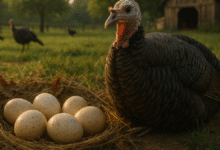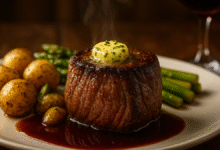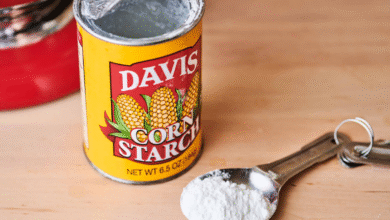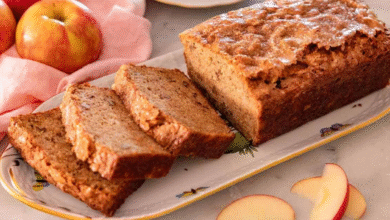Raw Chicken: A Complete Guide to Understanding, Handling, and Cooking Safely

Learn everything about raw chicken, from safe handling and storage tips to cooking techniques and nutrition facts. Expert advice to keep meals safe and tasty.
Raw chicken is one of the most commonly used ingredients in kitchens across the globe. It is versatile, affordable, and forms the base of countless recipes, from comforting soups to flavorful roasts. Yet, despite its popularity, raw chicken also comes with risks if not handled, stored, and cooked properly. Knowing how to manage raw chicken safely is crucial for both home cooks and professionals. This article explores everything about raw chicken, blending casual explanation with expert-level advice.
The Basics of Raw Chicken
Raw chicken refers to uncooked poultry meat that comes directly from processing plants or local markets. Its texture is soft and slightly slippery, with a pale pink color that can range from light to slightly darker shades depending on the breed of chicken. The presence of thin fat layers and small bones makes raw chicken ideal for various cooking methods.
However, raw chicken is also perishable. From the moment it is processed, bacteria begin to thrive if the meat is not refrigerated or frozen. Unlike vegetables or grains, chicken cannot sit at room temperature for long periods. That’s why refrigeration and freezing remain the most effective ways to preserve its freshness.
Why People Love Raw Chicken as an Ingredient
Raw chicken has long been a staple in global cuisines. It is inexpensive compared to red meats like beef or lamb and adapts easily to different flavors. Whether marinated in spicy sauces, grilled with herbs, or simmered in broths, chicken takes on the personality of any dish it is part of.
Another reason for its popularity is accessibility. Chicken farming has expanded worldwide, making raw chicken available in almost every grocery store, butcher shop, and food market. This global accessibility allows cultures to prepare traditional dishes without difficulty in sourcing.
The Risks of Raw Chicken
One of the major challenges with raw chicken is the potential for foodborne illness. Harmful bacteria such as Salmonella and Campylobacter often live on raw poultry surfaces. If consumed undercooked, these bacteria can cause stomach upset, cramps, fever, or more severe health problems.
Cross-contamination is another issue. Using the same cutting board for raw chicken and fresh vegetables without proper cleaning can spread harmful bacteria. This is why safe kitchen habits are not optional—they are essential. Treating raw chicken with caution ensures that meals remain both delicious and safe to eat.
Proper Storage of Raw Chicken
Storing raw chicken correctly makes a significant difference in maintaining its quality and safety. Raw chicken should always be kept cold. Refrigeration slows down bacterial growth, while freezing nearly halts it. If you plan to cook the chicken soon, refrigeration works fine, but for long-term use, freezing is the best option.
Packaging also matters. Chicken should be tightly wrapped or stored in sealed containers to prevent juices from dripping onto other foods. Many households prefer to keep chicken on the lowest shelf of the refrigerator. This simple step reduces the risk of raw chicken juices contaminating ready-to-eat items like fruits, salads, or dairy.
Handling Raw Chicken Safely in the Kitchen
When it comes to raw chicken, handling practices are just as important as cooking. Always wash your hands with warm water and soap before and after touching chicken. Dedicated cutting boards and knives for poultry help reduce contamination. If you must use the same board, sanitize it thoroughly before cutting vegetables or other ingredients.
Another tip is to avoid rinsing raw chicken under running water. Many believe this helps “clean” the meat, but in reality, it spreads bacteria around the sink and countertops. Instead, pat the chicken dry with paper towels if needed, and discard the towels immediately.
Cooking Raw Chicken the Right Way
Cooking is the ultimate safeguard against harmful bacteria. Raw chicken needs to reach an internal temperature high enough to kill pathogens. While each culture has unique preparation styles—grilling, baking, frying, or simmering—the end goal is the same: fully cooked chicken that is safe to eat.
Texture and appearance also help in identifying doneness. Properly cooked chicken turns from pink to white, with juices running clear instead of reddish. Though these signs are helpful, relying solely on appearance can sometimes be misleading. That’s why using a food thermometer is considered the most reliable method in professional kitchens.
Cultural Significance of Raw Chicken
Different cuisines celebrate chicken in unique ways. In Asian cooking, chicken is marinated in soy, ginger, and garlic before being stir-fried. In Middle Eastern traditions, raw chicken is coated with spices and roasted to produce aromatic, juicy dishes. Latin American cuisines often rely on chicken for hearty stews and rice-based meals.
The adaptability of raw chicken makes it a universal culinary symbol. It crosses cultural boundaries, appearing in festive dishes, comfort foods, and even street snacks. While the cooking techniques may differ, the shared value of chicken as a reliable protein unites food traditions worldwide.
Common Myths About Raw Chicken
A frequent myth is that rinsing raw chicken makes it safer. As mentioned earlier, rinsing only spreads bacteria. Another common belief is that slightly undercooked chicken is acceptable as long as it looks fine. In truth, even a small trace of undercooking can pose risks.
Some people also think frozen chicken is less nutritious than fresh. However, freezing locks in nutrients and can keep raw chicken safe for months without significant quality loss. These myths often circulate among home cooks but can be clarified with proper food safety education.
Nutritional Value of Raw Chicken
Raw chicken is packed with lean protein, which is essential for muscle growth and repair. It also contains vitamins like B6 and B12, which support brain health and energy production. Minerals such as phosphorus and selenium contribute to bone strength and immune function.
Compared to red meat, chicken is lower in saturated fat, making it a healthier choice for those aiming to reduce cholesterol. Its balance of high protein and lower fat content makes it popular among athletes, dieters, and health-conscious individuals.
A Table Summarizing Raw Chicken Handling
| Aspect | Recommendation |
|---|---|
| Storage Temperature | Keep refrigerated or frozen to preserve freshness |
| Cross-Contamination | Use separate boards and utensils for raw chicken |
| Cleaning | Do not rinse under water; sanitize surfaces after handling |
| Cooking | Ensure thorough cooking until meat is no longer pink and juices run clear |
| Packaging | Seal tightly to prevent leaks and contamination |
Quotes on Food Safety and Cooking
- “Good cooking is not just about flavor; it’s about keeping the food safe to enjoy.”
- “Raw chicken is the foundation of countless dishes, but proper handling is the true recipe for health.”
- “In every kitchen, safety and taste should walk hand in hand.”
Frequently Asked Questions
What happens if raw chicken is left out too long?
Raw chicken should not be left out at room temperature because bacteria can multiply quickly, making it unsafe to cook or eat.
Can raw chicken be frozen right after purchase?
Yes, freezing raw chicken immediately after purchase helps maintain its freshness and prevents bacterial growth.
Why should raw chicken not be rinsed before cooking?
Rinsing raw chicken spreads bacteria around the sink and nearby surfaces. Cooking properly is the only safe way to kill germs.
How can you tell if raw chicken has gone bad?
Spoiled chicken often has a sour odor, slimy texture, and a grayish color. If you notice any of these signs, discard it immediately.
Is it safe to marinate raw chicken overnight?
Yes, marinating raw chicken overnight in the refrigerator is safe and often enhances flavor. Just ensure the chicken is cooked thoroughly afterward.
Conclusion
Raw chicken is one of the most useful and adaptable ingredients in the culinary world. Its affordability, nutritional value, and versatility make it a go-to choice for home kitchens and restaurants alike. But with its benefits come responsibilities. Handling, storing, and cooking raw chicken with care ensures safety without compromising flavor. By combining culinary creativity with smart food safety practices, raw chicken can remain both a delicious and reliable part of everyday cooking.





